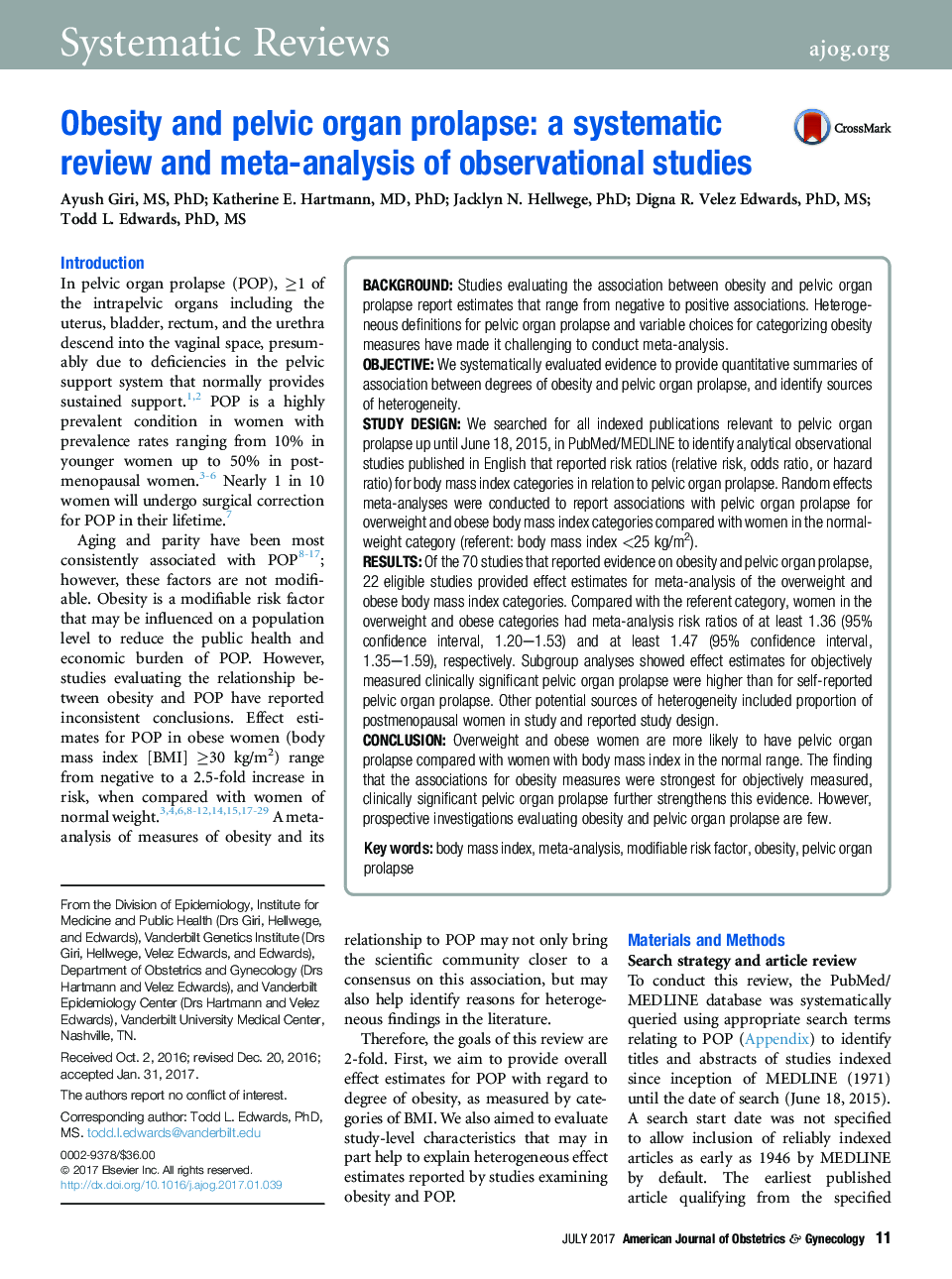| کد مقاله | کد نشریه | سال انتشار | مقاله انگلیسی | نسخه تمام متن |
|---|---|---|---|---|
| 5675709 | 1594874 | 2017 | 19 صفحه PDF | دانلود رایگان |
BackgroundStudies evaluating the association between obesity and pelvic organ prolapse report estimates that range from negative to positive associations. Heterogeneous definitions for pelvic organ prolapse and variable choices for categorizing obesity measures have made it challenging to conduct meta-analysis.ObjectiveWe systematically evaluated evidence to provide quantitative summaries of association between degrees of obesity and pelvic organ prolapse, and identify sources of heterogeneity.Study DesignWe searched for all indexed publications relevant to pelvic organ prolapse up until June 18, 2015, in PubMed/MEDLINE to identify analytical observational studies published in English that reported risk ratios (relative risk, odds ratio, or hazard ratio) for body mass index categories in relation to pelvic organ prolapse. Random effects meta-analyses were conducted to report associations with pelvic organ prolapse for overweight and obese body mass index categories compared with women in the normal-weight category (referent: body mass index <25 kg/m2).ResultsOf the 70 studies that reported evidence on obesity and pelvic organ prolapse, 22 eligible studies provided effect estimates for meta-analysis of the overweight and obese body mass index categories. Compared with the referent category, women in the overweight and obese categories had meta-analysis risk ratios of at least 1.36 (95% confidence interval, 1.20-1.53) and at least 1.47 (95% confidence interval, 1.35-1.59), respectively. Subgroup analyses showed effect estimates for objectively measured clinically significant pelvic organ prolapse were higher than for self-reported pelvic organ prolapse. Other potential sources of heterogeneity included proportion of postmenopausal women in study and reported study design.ConclusionOverweight and obese women are more likely to have pelvic organ prolapse compared with women with body mass index in the normal range. The finding that the associations for obesity measures were strongest for objectively measured, clinically significant pelvic organ prolapse further strengthens this evidence. However, prospective investigations evaluating obesity and pelvic organ prolapse are few.
Journal: American Journal of Obstetrics and Gynecology - Volume 217, Issue 1, July 2017, Pages 11-26.e3
